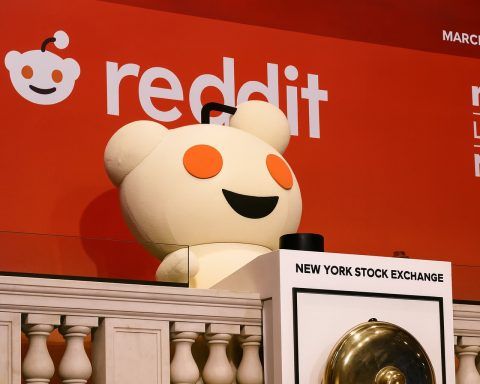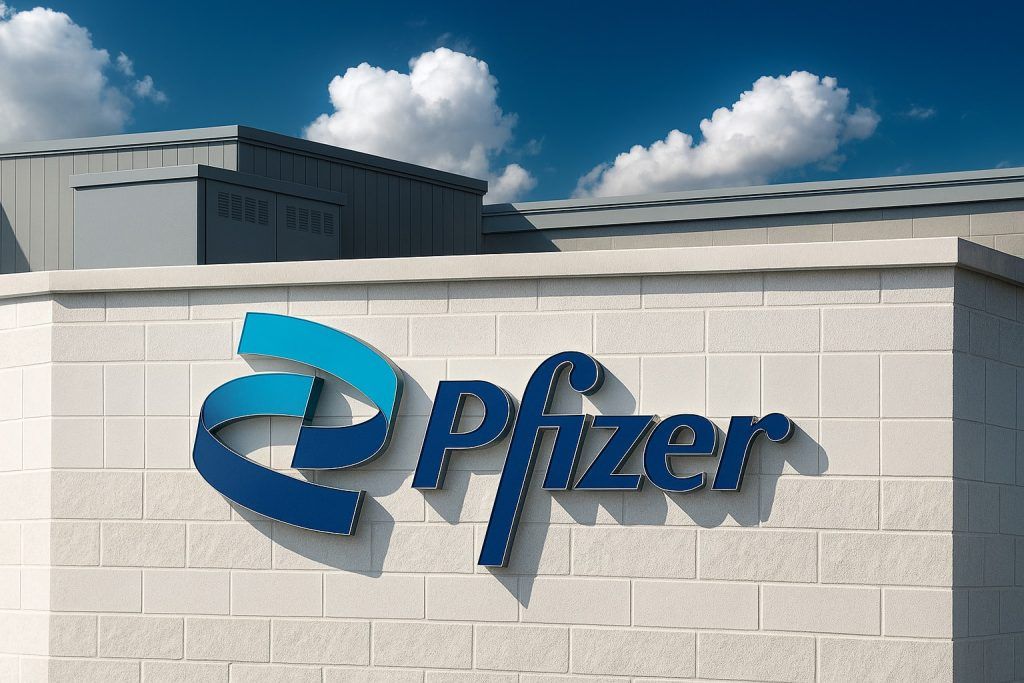- Earnings Beat: Spotify blew past forecasts in Q3 2025, posting €4.27 billion in revenue – slightly above consensus (€4.23 billion) [1]. Operating income reached €582 million for the quarter [2], and net income swung to €899 million (from a loss a year prior) [3].
- Surging Margins: Gross margin rebounded to 31.6% in Q3 [4], up from about 31.1% a year ago [5]. This puts Spotify closer to its long-term gross margin goal of ~30–35%, after years of heavy investment. Cost cuts (including lower marketing spend and staffing costs) and higher prices helped boost profitability [6] [7].
- User Milestone: Monthly Active Users (MAUs) hit 713 million (up 11% YoY) and premium subscribers reached 281 million (up 12% YoY) [8]. Spotify added 17–18 million net new MAUs in Q3, beating its own guidance and marking strong growth across regions [9] [10]. The ad-supported “free” tier now exceeds 430 million users, continuing to fuel the funnel of new paying customers [11].
- New Features Drive Engagement: The company finally launched a high-quality lossless audio option for premium users and integrated with OpenAI’s ChatGPT for music recommendations [12] [13]. Audiobook listening jumped 36% over the past year [14]. CEO Daniel Ek says engagement is at an “all-time high” as Spotify rapidly rolls out innovations across music, podcasts, and audiobooks [15] [16].
- Q4 Outlook: Spotify forecasts Q4 2025 operating profit of €620 million, slightly above Wall Street estimates [17]. It expects to end the year with 745 million MAUs and 289 million paying subs, which would be ~32 million net new users in Q4 [18] [19]. Revenue is guided at €4.5 billion for Q4 (just below analysts’ €4.57 billion forecast) [20]. Spotify’s leadership says it is “well positioned” for continued growth and improving margins in 2025 [21].
- Price Hike Speculation: With Spotify raising Premium prices in markets from the UK to Australia this year, analysts predict a U.S. price increase by late 2025 or early 2026 [22]. Citi’s Jason Bazinet noted that “investors continue to expect a US price increase [in Q4 2025 or Q1 2026]” [23], which could add hundreds of millions in annual revenue. Spotify’s recent deals with record labels reportedly include higher minimum royalties – another signal a U.S. price bump is looming [24].
- Stock on a Tear:Spotify’s stock (NYSE: SPOT) has surged about 70% in the past year, buoyed by the company’s leaner cost structure, price increases, and optimism about new AI-powered products [25]. Shares traded around $650 in early November [26] – up from roughly $380 a year ago – though still below their record high of ~$775 set earlier in 2025 [27]. The Q3 results sent the stock up over 5% in pre-market trading [28], and it opened around $653 on Nov 4. Analysts remain bullish: the consensus rating is “Strong Buy,” with an average price target near $790 (about 20% above current levels) [29].
Q3 2025 Earnings Beat Expectations
Spotify delivered a robust third-quarter performance, topping earnings estimates and underscoring its financial turnaround. The audio streaming giant reported €4.27 billion in Q3 revenue, slightly exceeding forecasts (about €4.23 billion) [30]. This represented ~7% growth year-on-year (12% growth on a constant-currency basis) [31] [32]. Key drivers were strong subscriber gains and higher subscription prices instituted in many markets. On the bottom line, operating profit came in at €582 million [33], rising roughly 28–33% from a year ago as Spotify reined in costs and expanded margins. Net income swung to €899 million for the quarter, a dramatic improvement from a €300 million loss in Q3 2024 [34]. This marks one of Spotify’s most profitable quarters ever, reflecting the payoff from its recent efficiency push.
Crucially, user growth met or beat expectations. Premium subscribers hit 281 million (up 12% year-over-year), essentially in line with analyst estimates [35]. Monthly Active Users (including free and paid listeners) reached 713 million, beating forecasts of ~710 million [36]. Spotify added a net 18 million MAUs in Q3 alone [37], outpacing its guidance by about 3 million. This growth was broad-based globally, with particularly strong uptake in Latin America and North America on the premium side [38]. Such robust user gains helped fuel Spotify’s revenue climb and demonstrate that the platform’s expansion is still far from plateauing, even as it exceeds 700 million users worldwide.
The strong Q3 showing indicates Spotify’s strategy is clicking on multiple fronts. “The business is healthy…we have the tools we need – pricing, product innovation, operational leverage, and eventually the ads turnaround – to deliver both revenue growth and profit expansion,” CEO Daniel Ek said of the results [39]. He noted that engagement is at record highs, with “700 million users who keep coming back… We’re building Spotify for the long-term” [40]. In other words, management sees plenty of runway ahead in both user growth and monetization.
Margins Rebound Toward Targets
One of the standout stories of Spotify’s Q3 was margin improvement. The company’s gross margin rose to 31.6% [41], up about 0.5 percentage points from 31.1% a year ago [42]. While a 31.6% margin may seem modest compared to tech peers, it shows Spotify inching closer to the 30–35% margin range it ambitiously targeted at its 2022 Investor Day. This rebound comes after margins had dipped to ~31.5% in the first half of 2025 due to seasonal ad lulls and higher content costs [43]. In Q3, margins benefited from higher pricing and disciplined cost control. Spotify has aggressively cut expenses this year – trimming marketing spend and slowing hiring – which, combined with revenue growth, boosted its operating leverage [44] [45].
The result was significantly improved profitability. Spotify’s €582 million operating profit in Q3 beat its own guidance and was ~€145 million higher than a year ago [46]. Notably, actual operating income exceeded forecasts in part due to lower-than-expected “Social Charges” (payroll taxes on stock-based compensation) [47]. Because Spotify’s share price declined during Q3, the company incurred less tax on employee stock options than it had budgeted, yielding a one-time savings of about €41 million [48]. Even aside from this quirk, underlying margins improved thanks to Spotify’s leaner cost structure and the impact of price increases on subscription revenue. Premium subscription average revenue per user (ARPU) held flat year-on-year (at €4.53) on a constant FX basis [49] [50] – a notable achievement given foreign exchange headwinds and Spotify’s rapid growth in lower-ARPU emerging markets. The company noted that price hike benefits were largely offset by mix effects, but those price rises will play a bigger role in revenue going forward [51].
Altogether, Spotify’s profitability metrics are trending in the right direction. The firm posted an operating margin of roughly 13.6% in Q3 (582M operating profit on €4.27B revenue), and its net profit margin reached an impressive ~21% thanks in part to a one-off tax benefit on a deferred tax asset [52]. This is a remarkable turnaround from persistent losses just a couple of years ago. Spotify’s management has stressed a commitment to balancing growth with efficiency. After a period of heavy investment in podcasts, audiobooks, and global expansion (which held margins down), the company is now reaping rewards from scale. “Overall, we are very pleased with our performance heading into year-end and view the business as well positioned to deliver growth and improving margins in 2025,” Spotify told investors in its Q3 presentation [53]. In short, the margin rebound suggests Spotify’s business model is maturing, moving closer to sustainable profitability even as it continues to grow.
User Growth and New Initiatives
Spotify’s user base expansion remains robust, underscoring its leadership in music streaming. In Q3 the platform gained millions of users across both its free ad-supported tier and paid Premium tier. Total Monthly Active Users (MAUs) jumped 11% year-over-year to 713 million [54], with growth in every region (especially “Rest of World” emerging markets, as well as Europe and North America) [55]. The ad-supported free tier now accounts for about 432 million users (the remainder being paying subscribers) [56]. This free user influx is critical: it feeds Spotify’s ecosystem with new listeners, data, and advertising opportunities, and a portion of free users eventually convert to paid plans. As Spotify put it, the free tier is the “foundation” of its funnel – driving discovery and engagement that ultimately lead users to upgrade [57] [58].
Meanwhile, Premium subscriptions rose 12% YoY to reach 281 million [59], indicating Spotify is still finding ways to sign up new paying customers even in a competitive, mature market. The company cited strong promotions and growth in Latin America and North America as helping fuel subscriber gains [60]. Notably, Premium growth slightly outpaced overall MAU growth in percentage terms, suggesting a gradual increase in the conversion rate of free users to paid [61]. Spotify’s ability to consistently grow subscribers by double digits annually – now at a scale nearing 300 million paid users – is a positive sign for its monetization prospects. It also highlights strong consumer loyalty and demand for music streaming globally.
Driving this user engagement and growth are Spotify’s ongoing product updates. In Q3 2025, Spotify finally rolled out a long-awaited feature: lossless “HiFi” audio for Premium subscribers [62]. This higher-quality streaming option had been promised for years; its debut caters to audiophiles and could entice some users to upgrade or stay with Spotify rather than rival services. The company also doubled down on audiobooks – a segment it added into Premium at no extra cost. Spotify revealed that audiobook listeners grew 36% and their hours of consumption jumped 37% year-on-year [63], showing traction in this newer content category. Another innovation was Spotify’s partnership with OpenAI’s ChatGPT. In October, Spotify enabled a feature for users to link their account with ChatGPT and get music or podcast recommendations via conversational prompts [64]. This experiment in AI-driven discovery is aimed at boosting user engagement by making it easier (and more fun) to find content. Early signs suggest features like the AI “DJ” mode and ChatGPT integration are resonating with younger audiences and keeping Spotify’s experience fresh [65].
These initiatives come alongside Spotify’s push into AI and personalization. “We’re shipping faster than ever,” CEO Daniel Ek said, emphasizing that product innovation is one of the key tools driving Spotify’s user growth and record engagement [66] [67]. The company’s platform now offers a mix of music, podcasts, and audiobooks tailored by algorithms – and increasingly by generative AI. This rich feature set likely contributes to Spotify’s industry-leading engagement metrics (as measured by hours streamed per user) and helps fortify its competitive moat. Looking ahead, Spotify’s ability to keep innovating will be crucial as it battles big rivals like Apple Music and Amazon Music. Both Apple and Amazon have also introduced higher-quality audio and raised prices recently, but Spotify’s massive user base and rapid feature rollout have helped it maintain an edge in the streaming wars.
It’s worth noting that leadership changes are on the horizon even as these strategies play out. This earnings report was the first since Spotify announced that founder/CEO Daniel Ek will transition to an Executive Chairman role in January, moving the company to a co-CEO structure [68]. Longtime executives Alex Norström and Gustav Söderström are set to share the chief executive duties. Investors will be watching closely to ensure this leadership evolution doesn’t slow Spotify’s momentum in product execution or strategic focus. So far, confidence remains high that Ek’s vision will continue to guide Spotify’s innovation engine from his new role, while the co-CEOs handle day-to-day operations.
Price Hike Speculation Builds
One of the hottest topics around Spotify now is pricing power. In the past 18 months, Spotify has shown a newfound willingness to raise subscription prices – and analysts suspect more hikes are imminent. During Q3, Spotify implemented price increases in markets like the UK and Switzerland, bumping the UK individual Premium plan from £11.99 to £12.99 (an 8.3% jump) [69]. This followed a similar ~$1/month increase in the U.S. back in mid-2024 [70]. The company has also hiked prices across various tiers (Duo, Family plans, etc.) and regions, including recent rises in Australia, Germany, Austria, and others [71]. These moves are part of what Morgan Stanley analysts call “the beginning of a pricing cycle in ’26” – a trend of industry-wide price increases as streaming matures [72]. Competitors like Apple Music and Amazon Music have also lifted rates, giving Spotify cover to charge more without driving users away [73].
Now, all eyes are on the U.S. market. The U.S. (Spotify’s largest revenue market) has not seen a price change since June 2024, when the Premium plan went to $10.99 → $11.99 [74]. Many experts believe another U.S. hike is due soon. Citi analyst Jason Bazinet noted recently that “investors continue to expect a US price increase [in the fourth quarter of 2025 or first quarter of 2026]” [75]. His view is echoed by others: J.P. Morgan’s team forecast a U.S. price hike by the end of 2025 or early 2026, estimating it could add roughly €425 million (>$490 M) in annual revenue [76]. Guggenheim Securities likewise projects a U.S. subscription price increase in late 2025, especially since Spotify’s new contracts with record labels apparently “included pending increases in per-subscriber” fees that would likely be passed to consumers [77]. In short, Wall Street sees Spotify entering a phase where it can systematically charge more for its service – a lever that directly boosts margins and revenue.
Spotify’s management seems to agree that the time for higher prices has arrived, now that user growth remains solid. The company stated that it “periodically updates pricing to reflect local market conditions and economic factors” while continuing to add value to the service [78] [79]. In other words, as long as Spotify keeps improving its offerings (e.g. exclusive content, new features like audiobooks or HiFi audio), it believes users will tolerate paying a bit extra. CEO Daniel Ek has indicated he watches subscriber growth closely when considering price changes [80] – and with subs still rising strongly, Spotify appears to have the green light to nudge prices higher. Recent analyst commentary underscores that pricing is now a key part of Spotify’s growth story. “Spotify’s latest price increases…create a template for other markets” and demonstrate “significant margin potential still ahead,” wrote Morgan Stanley’s Benjamin Swinburne in an investor note [81] [82]. In practical terms, further price hikes – particularly in the U.S. – could meaningfully boost Spotify’s revenue per user in 2026, especially since its core subscription fee is still slightly cheaper than Apple Music’s in some regions. Investors will be watching the company’s next moves on pricing, as any announcement of a U.S. Premium hike (for instance, to $12.99/month) would likely be cheered by the market.
Investor Reaction and Outlook
Spotify’s stronger-than-expected Q3 earnings and optimistic outlook have largely validated investor confidence in the company’s turnaround. The stock’s reaction was positive: Spotify shares jumped over 5% in pre-market trading on November 4 after the results came out [83]. During the day, the stock opened above $650 and eventually closed around $644, about +1.6% higher than the prior day’s close. This continues a bullish trend for Spotify stock in 2025 – it has already climbed roughly 70% over the past year [84], making it one of the stronger performers in the tech/media space. The rally has been fueled by Spotify’s improving financials and renewed focus on efficiency (following earlier layoffs and podcast cost cutbacks), as well as excitement over its moves in AI and higher-margin businesses. “The stock has climbed roughly 70% in the past year, driven by price hikes, a leaner cost structure, and optimism surrounding AI-driven product innovation,” Yahoo Finance noted in its coverage [85]. Indeed, Spotify’s venture into AI DJ features, plus its first-ever annual profit expected this year, have shifted market sentiment from skepticism to optimism.
Even after this run-up, many analysts see more upside ahead. As of this week, Wall Street’s consensus on SPOT is “Strong Buy,” with 19 out of 24 analysts rating it a Buy [86]. The average 12-month price target is about $793 per share [87], implying ~20–25% upside from current levels around $650. Some bulls have targets well above $800, reflecting expectations that Spotify’s margins and cash flows will expand rapidly in the coming years. For instance, Morgan Stanley’s Swinburne argues that Spotify has added “significant value” to its offerings and that the new pricing cycle will fuel growth into next year [88]. On the same note, Bernstein’s analysts have highlighted the entire music streaming industry’s focus on finding pricing power after years of $9.99/month standards [89]. If Spotify can execute on both growth and margin expansion – adding users while also earning more per user – its financial profile in 2026–2028 could look dramatically stronger than today. That underpins the bullish outlook.
Of course, there are risks and unknowns. Spotify’s ad-supported business has been relatively soft (ad revenues were flat YoY on a constant currency basis in Q3) [90], so a broader advertising rebound would help the company hit its targets. The competitive landscape is also ever-present: rivals like Apple are bundling music with other services, and upstarts (plus TikTok’s music service) aim to capture young listeners. But Spotify’s Q3 report suggests it is navigating these challenges well – growing users, rolling out product enhancements, and finding more ways to monetize. The upcoming holiday quarter (Q4) will be an important test, as Spotify is counting on robust user additions (forecast ~32 million new MAUs) and continued momentum in subscriptions [91]. Notably, the company’s Q4 revenue guidance (€4.5 B) was a hair below consensus [92], possibly reflecting caution around ad sales or macroeconomic factors. Nonetheless, Spotify expects to deliver a record quarterly profit to end 2025, and it will enter 2026 with a massive user base and new co-CEO leadership team at the helm [93].
Bottom Line: Spotify’s Q3 2025 results underscore a company hitting its stride. The platform is bigger than ever (over 700 million users) and now demonstrably more profitable, thanks to higher margins and smart pricing moves. Management’s emphasis on “accelerated execution” – shipping new features and leveraging its scale – is paying off in both user engagement and financial performance. With a potential U.S. price hike on the horizon and analysts projecting further growth, Spotify is entering 2026 on a high note. As CEO Daniel Ek put it, Spotify now has “the tools we need… to deliver both revenue growth and profit expansion” for the long term [94]. Investors appear to agree, tuning in closely as Spotify conducts the next movement in its profitability turnaround story.
Sources: Spotify Q3 2025 Earnings Press Release [95] [96]; Reuters [97] [98] [99]; Music Business Worldwide [100] [101] [102]; Yahoo Finance [103] [104]; Music Business Worldwide (Price Hike Analysis) [105] [106]; TipRanks (Analyst Insights) [107] [108].
References
1. ca.investing.com, 2. newsroom.spotify.com, 3. www.musicbusinessworldwide.com, 4. newsroom.spotify.com, 5. www.musicbusinessworldwide.com, 6. ca.investing.com, 7. www.musicbusinessworldwide.com, 8. newsroom.spotify.com, 9. www.musicbusinessworldwide.com, 10. www.musicbusinessworldwide.com, 11. www.hypebot.com, 12. ca.investing.com, 13. ca.investing.com, 14. ca.investing.com, 15. www.musicbusinessworldwide.com, 16. www.musicbusinessworldwide.com, 17. ca.investing.com, 18. ca.investing.com, 19. www.musicbusinessworldwide.com, 20. ca.investing.com, 21. www.musicbusinessworldwide.com, 22. www.musicbusinessworldwide.com, 23. finance.yahoo.com, 24. www.musicbusinessworldwide.com, 25. finance.yahoo.com, 26. finance.yahoo.com, 27. finance.yahoo.com, 28. ca.investing.com, 29. www.tipranks.com, 30. ca.investing.com, 31. ca.investing.com, 32. newsroom.spotify.com, 33. newsroom.spotify.com, 34. www.musicbusinessworldwide.com, 35. ca.investing.com, 36. www.musicbusinessworldwide.com, 37. www.musicbusinessworldwide.com, 38. www.musicbusinessworldwide.com, 39. www.musicbusinessworldwide.com, 40. www.musicbusinessworldwide.com, 41. newsroom.spotify.com, 42. www.musicbusinessworldwide.com, 43. www.aol.com, 44. ca.investing.com, 45. www.musicbusinessworldwide.com, 46. www.musicbusinessworldwide.com, 47. www.musicbusinessworldwide.com, 48. www.musicbusinessworldwide.com, 49. www.musicbusinessworldwide.com, 50. www.musicbusinessworldwide.com, 51. www.musicbusinessworldwide.com, 52. www.musicbusinessworldwide.com, 53. www.musicbusinessworldwide.com, 54. newsroom.spotify.com, 55. www.musicbusinessworldwide.com, 56. www.hypebot.com, 57. www.hypebot.com, 58. www.hypebot.com, 59. newsroom.spotify.com, 60. www.musicbusinessworldwide.com, 61. www.hypebot.com, 62. ca.investing.com, 63. ca.investing.com, 64. ca.investing.com, 65. ca.investing.com, 66. www.musicbusinessworldwide.com, 67. www.musicbusinessworldwide.com, 68. ca.investing.com, 69. www.musicbusinessworldwide.com, 70. www.musicbusinessworldwide.com, 71. www.musicbusinessworldwide.com, 72. www.musicbusinessworldwide.com, 73. www.musicbusinessworldwide.com, 74. www.musicbusinessworldwide.com, 75. finance.yahoo.com, 76. www.musicbusinessworldwide.com, 77. www.musicbusinessworldwide.com, 78. www.musicbusinessworldwide.com, 79. www.musicbusinessworldwide.com, 80. www.musicbusinessworldwide.com, 81. www.musicbusinessworldwide.com, 82. www.musicbusinessworldwide.com, 83. ca.investing.com, 84. finance.yahoo.com, 85. finance.yahoo.com, 86. www.tipranks.com, 87. www.tipranks.com, 88. www.tipranks.com, 89. www.tipranks.com, 90. www.musicbusinessworldwide.com, 91. ca.investing.com, 92. ca.investing.com, 93. ca.investing.com, 94. www.musicbusinessworldwide.com, 95. newsroom.spotify.com, 96. newsroom.spotify.com, 97. ca.investing.com, 98. ca.investing.com, 99. ca.investing.com, 100. www.musicbusinessworldwide.com, 101. www.musicbusinessworldwide.com, 102. www.musicbusinessworldwide.com, 103. finance.yahoo.com, 104. finance.yahoo.com, 105. www.musicbusinessworldwide.com, 106. www.musicbusinessworldwide.com, 107. www.tipranks.com, 108. www.tipranks.com















